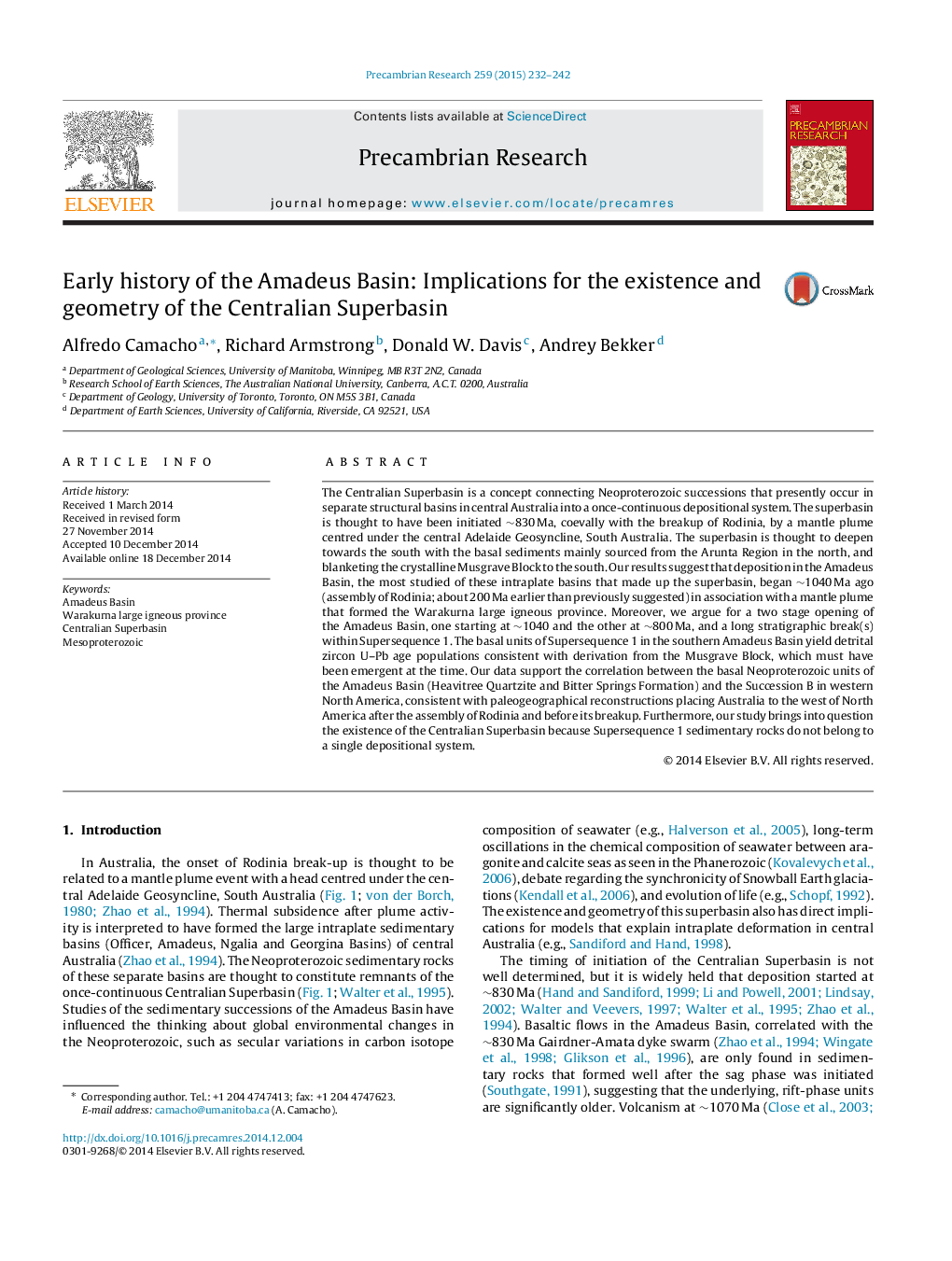| کد مقاله | کد نشریه | سال انتشار | مقاله انگلیسی | نسخه تمام متن |
|---|---|---|---|---|
| 4722840 | 1639616 | 2015 | 11 صفحه PDF | دانلود رایگان |
• The Centralian Superbasin initiated at ∼1040 Ma.
• We propose a two stage opening of the Amadeus Basin; at ∼1040 Ma and at ∼800 Ma.
• Supersequence 1 sedimentary rocks do not belong to a single depositional system.
The Centralian Superbasin is a concept connecting Neoproterozoic successions that presently occur in separate structural basins in central Australia into a once-continuous depositional system. The superbasin is thought to have been initiated ∼830 Ma, coevally with the breakup of Rodinia, by a mantle plume centred under the central Adelaide Geosyncline, South Australia. The superbasin is thought to deepen towards the south with the basal sediments mainly sourced from the Arunta Region in the north, and blanketing the crystalline Musgrave Block to the south. Our results suggest that deposition in the Amadeus Basin, the most studied of these intraplate basins that made up the superbasin, began ∼1040 Ma ago (assembly of Rodinia; about 200 Ma earlier than previously suggested) in association with a mantle plume that formed the Warakurna large igneous province. Moreover, we argue for a two stage opening of the Amadeus Basin, one starting at ∼1040 and the other at ∼800 Ma, and a long stratigraphic break(s) within Supersequence 1. The basal units of Supersequence 1 in the southern Amadeus Basin yield detrital zircon U–Pb age populations consistent with derivation from the Musgrave Block, which must have been emergent at the time. Our data support the correlation between the basal Neoproterozoic units of the Amadeus Basin (Heavitree Quartzite and Bitter Springs Formation) and the Succession B in western North America, consistent with paleogeographical reconstructions placing Australia to the west of North America after the assembly of Rodinia and before its breakup. Furthermore, our study brings into question the existence of the Centralian Superbasin because Supersequence 1 sedimentary rocks do not belong to a single depositional system.
Journal: Precambrian Research - Volume 259, April 2015, Pages 232–242
